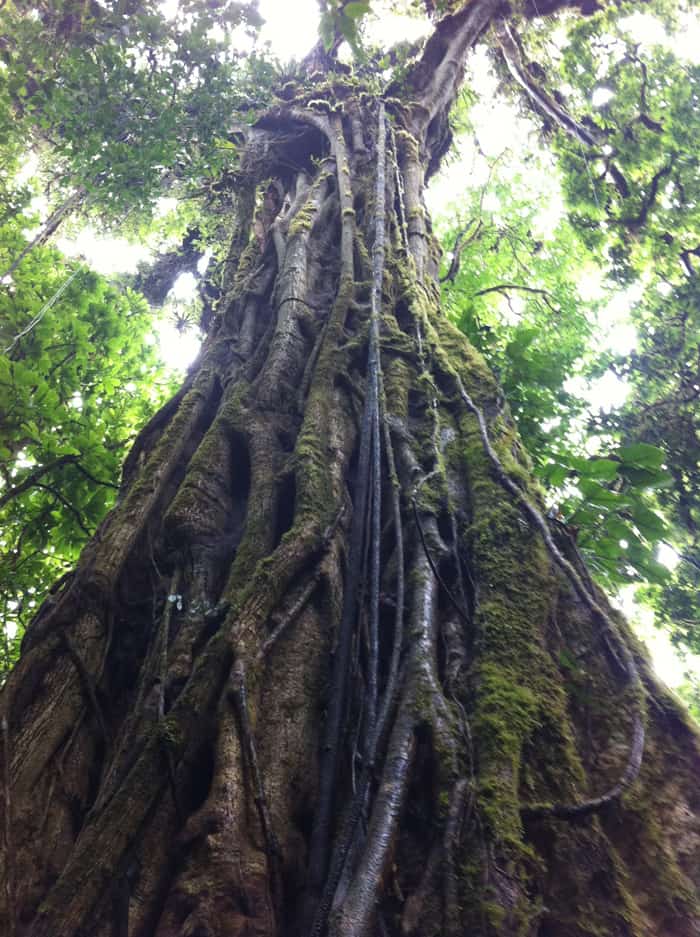MONTEVERDE CLOUD FOREST RESERVE, Puntarenas — The guide said there was a poisonous little snake that lived somewhere along this section of the trail, deep in the dark, wet forest. “Oh, there he is,” he said, spotting a little green clump clinging to a big green leaf several meters away. “Where?” Nobody else could see it.
“Right there,” said Juan Carlos Solano, 50, pointing with his laser. “That’s a side-striped palm pit viper” — a very dangerous little fellow. Solano set up his telescope and sighted it in, and now the visitors could make it out. That Solano spotted this perfectly camouflaged creature the instant he started looking for it seemed miraculous.
It helps to know where to look. Solano walked up to a hollow log, got out his flashlight and said, “There’s a tarantula in there.” And there was — an orange-kneed tarantula balled up as if for a nap. Monteverde lived up to its reputation Wednesday as a magical, other-worldly forest — clouded in mist, spattered with rain, weirdly dark in the middle of the day and very, very green.
Solano explained how the warm, moisture-laden winds from the Caribbean blow up these mountainsides, cool and condense, turning to mist that shrouds the trees and provides much of the moisture they thrive on. “Where do you get your water in Florida?” he asked two young women from West Palm Beach.
One said something about the water table, and the other said, “Water towers.” Solano laughed and said, “The grocery store!”
Seemingly every tree here is covered in epiphytes, plants that grow on other plants and draw moisture and nutrients from the air, like moss, bromeliads and orchids. One giant strangler fig, which is not a true epiphyte but a killer parasite, had completely suffocated its host, leaving its trunk hollow where the original tree rotted away.
“All the trees are in competition for light,” Solano said — trying to outgrow the shade of the canopy formed by the larger trees. “In Costa Rica a long time ago, we paid for deforestation,” he said, meaning trees were cleared for grazing. “Now we pay for conservation. Notice the trees around here are really skinny. Why? Because this is all secondary growth. A long time ago people cut them.”
Solano repeatedly interrupted his spiel to point out the call of a bird, all of which he could identify and imitate expertly.
Mimicking one musical chirp, he said, “Gray-breasted wood wren. You know the movie ‘Star Wars,’ the little R2-D2?” It sounded just like him.
Solano pointed out a hard-to-see hummingbird perched on a twig, rattling off the name of the species like it was one of his children. He noted the green jacket he was wearing and said he used to wear a red jacket, but the hummingbirds buzzed him because they thought he was a giant flower.
This exuberant tour guide said he was born here and his family lived here before 44 Quakers from Alabama came in 1950, bought 1,400 hectares and named the place Monteverde. The Quakers, or Friends, were instrumental in turning this place into a private, protected reserve.
Solano noted that Costa Rica is just 51,000 square km, but at least 25 percent of it is protected from development today. “Long time ago, all the people cutting, all the animals leave,” he said. “Now everything’s protected, everything’s coming back.”
Written by Karl Kahler




